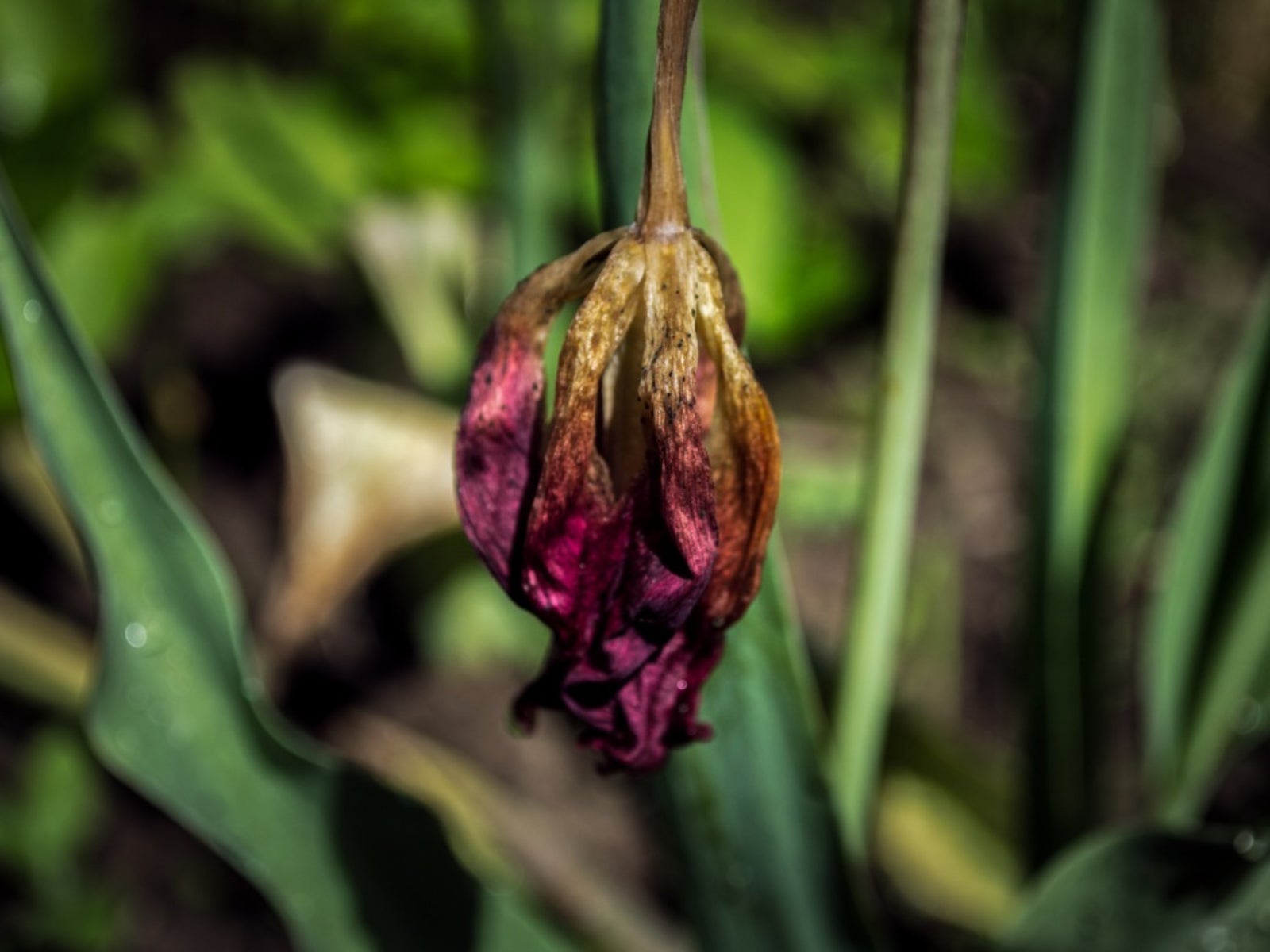Diseases Of Tulips – Information On Common Tulip Diseases


Tulips are hardy and easy to grow, and provide a welcome early sign of spring. Though they’re fairly disease tolerant, there are a few common tulip diseases that can affect the soil or your new bulbs. Keep reading for information on diseases of tulips.
Diseases of Tulips
Most problems with tulips are fungal in nature.
- One common tulip fungal disease is the Botrytis blight, also known as tulip fire or mycelial neck rot. This problem affects every part of the tulip. It appears as discolored, singed-looking spots on the leaves and petals. The stems may become weak and collapse, while the bulbs become covered with lesions.
- Gray bulb rot and tulip crown rot cause the bulbs to turn gray and wither, often without producing any growth.
- Pythium root rot causes brown and gray soft spots on the bulb and stops shoots from emerging.
- Stem and bulb nematode causes brown, spongy patches on the bulbs. These feel lighter than usual and have a mealy texture when broken open.
- Basal rot can is identified by large brown spots and white or pink mold on the bulbs. These bulbs will produce shoots, but the flowers may be deformed and the leaves may die prematurely.
- Breaking virus affects only red, pink, and purple tulip cultivars. It causes either white or dark-colored streaks or ‘breaks’ on the petals.
Treating Common Tulip Diseases
Tulip disease problems are often treated by a thorough examination before planting. Study each bulb carefully, looking for tell-tale dark or spongy spots and mold. You can also detect rot by dropping the bulbs in water: rotten bulbs will float, while healthy bulbs will sink. Unfortunately, water is a good carrier of disease. This makes it easier for infected bulbs to spread to healthy ones. Be sure to spray all the good bulbs with fungicide to prevent future issues. If any of these tulip disease problems manifest themselves on your tulip plants, remove and burn the infected plants as soon as you notice them. Don’t plant tulips in that spot for a few years, as the disease spores can remain in the soil and infect future plants.
Sign up for the Gardening Know How newsletter today and receive a free copy of our e-book "How to Grow Delicious Tomatoes".

The only child of a horticulturist and an English teacher, Liz Baessler was destined to become a gardening editor. She has been with Gardening Know how since 2015, and a Senior Editor since 2020. She holds a BA in English from Brandeis University and an MA in English from the University of Geneva, Switzerland. After years of gardening in containers and community garden plots, she finally has a backyard of her own, which she is systematically filling with vegetables and flowers.